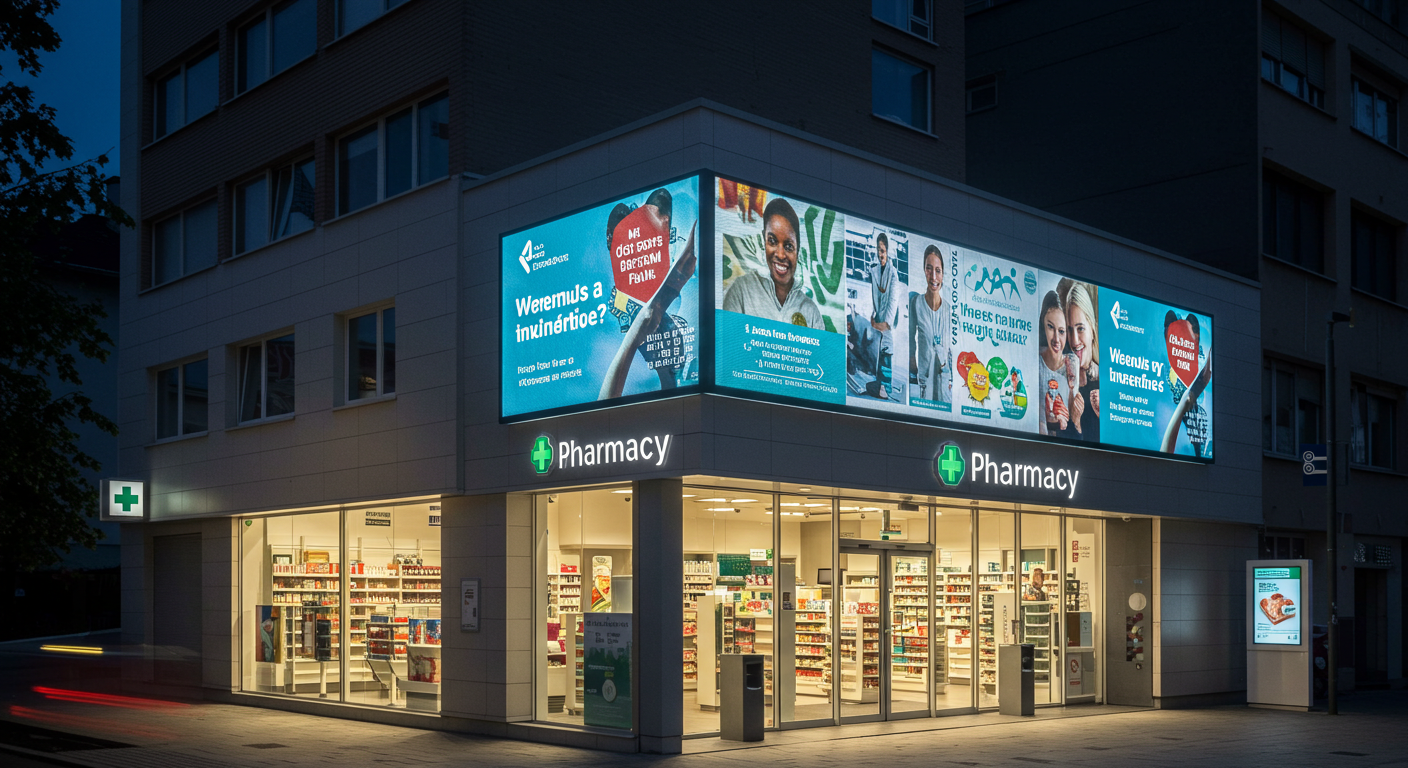In the bustling theater of the city street, where neon screams and billboards shout, the pharmacy has always held a different kind of power. It is a place of quiet urgency, of whispered needs, of small miracles in bottles and boxes. Its symbol, the green cross, is not an advertisement, but a beacon—a promise of care, of relief, of hope. And now, that symbol has begun to speak. Not in words, but in light. LED screens, mounted atop or within the pharmacy’s facade, have transformed this humble sign into a dynamic, living emblem of community service.
By day, the screen might display opening hours, a reminder of flu shot availability, or a gentle animation of a beating heart to promote heart health awareness. It is informative, but never intrusive. It respects the gravity of the place it represents. By night, when the streetlights flicker on and the city settles into its evening rhythm, the screen glows with a soft, steady luminescence. It becomes a lighthouse in the urban dark, guiding those in need with a calm, unwavering light. In an emergency, it can flash critical information—a change in hours, a recall notice, a public health alert—reaching the community faster than any flyer or social media post.
The design is intentionally restrained. These are not giant video walls blasting commercials. They are often single or double-sided crosses, or simple rectangular panels integrated into the existing architecture. The content is minimal, clear, and purposeful. Brightness is calibrated to be visible without being harsh, colors chosen for clarity and calm. Some even incorporate small speakers to broadcast brief, vital messages—“Pharmacy open 24 hours,” “Emergency contraception available”—in a voice that is reassuring, not alarming.
What makes these screens so powerful is their context. They do not sell luxury watches or fast food; they serve a fundamental human need. Their message is not “Buy this,” but “We are here.” They transform the pharmacy from a commercial space into a civic one, a node in the community’s network of care. During a heatwave, they might display hydration tips. During a pandemic, they become a trusted source of accurate, local health information. They are a silent partner in public well-being.
For the pharmacist, the screen is more than a tool; it’s an extension of their oath. It allows them to reach beyond the counter, to educate, to reassure, to guide—even when the doors are closed. For the passerby, it is a small comfort, a visual whisper that says, “Help is near.” In a world of noise, the pharmacy’s LED screen speaks in a voice of calm, clarity, and care. It reminds us that technology, at its best, doesn’t dazzle—it serves. It doesn’t distract—it directs. And sometimes, the most important message is not the loudest, but the one that glows steadily in the dark, saying simply: “We are here for you.”



